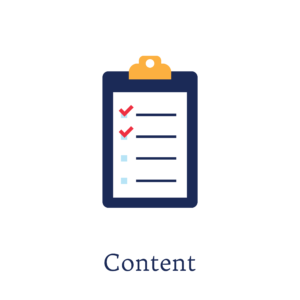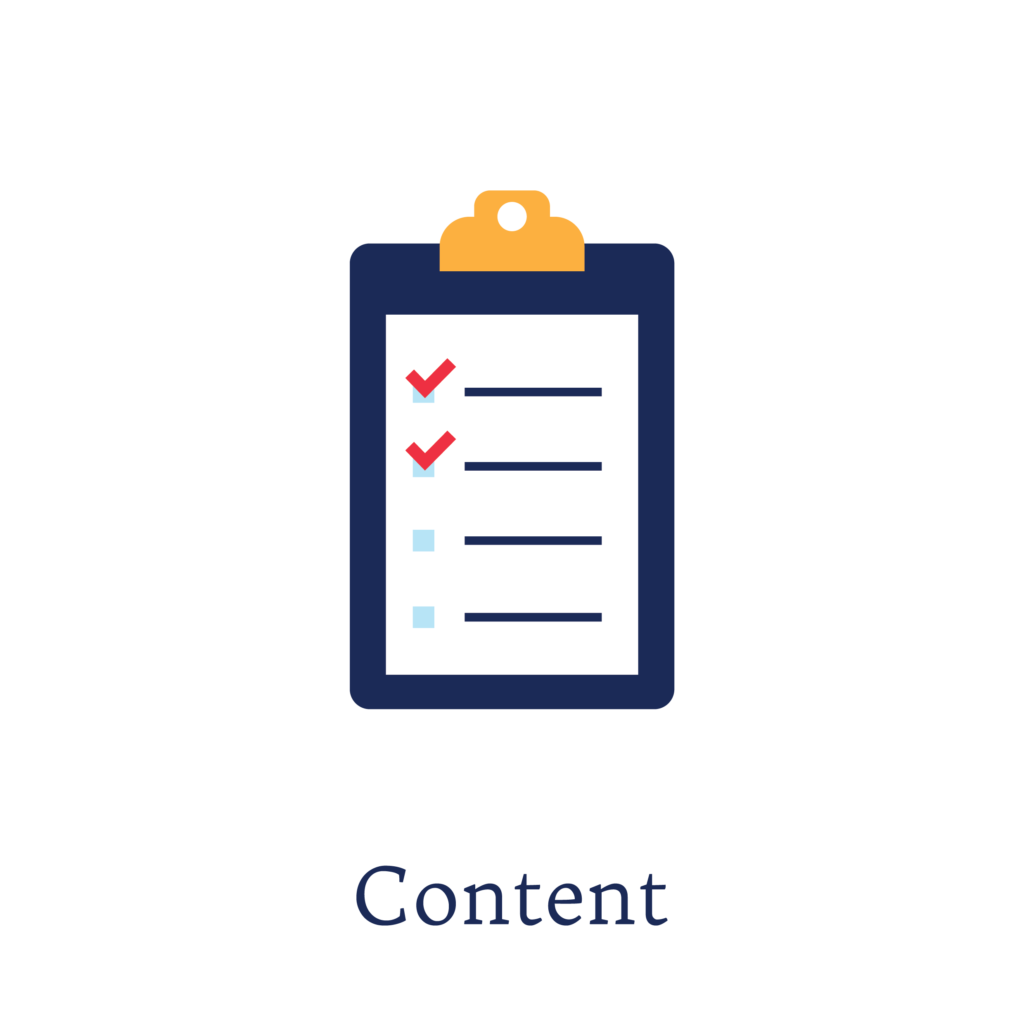In order for your small business to succeed, you need a strong marketing strategy. Marketing is the only way to ensure that the right people find your website, become leads, turn into customers, and help you grow and sustain a profitable business.
Big businesses have the advantage of large advertising budgets and marketing teams, a luxury most small businesses cannot afford. But accessing these expensive resources is not the only way to find success. In fact, with the right tools, and a little bit of knowledge, you can create a content marketing strategy that will generate leads for years to come.
To stimulate sales, you need to stimulate interest in your business. Generating these leads is the first step and content marketing is the way to get the  results you need without having to spend massive amounts of money.
results you need without having to spend massive amounts of money.
Content marketing allows you to connect with your prospective audience by providing them with a piece of content that they care about. It helps establish a trusting relationship between your business and your current and potential customers.
One of the most valuable elements of content marketing is that your content will continue to have an impact long after you have created and shared it. Because your content is offering information or entertainment, it can continue to inspire interest and curiosity for the entire life of the post.
In order to most effectively use content to passively generate leads, there are a few steps you should keep in mind:
1) Define your audience
Before you begin creating content, you need to know who you are creating the content for. There are lots of things happening on the internet, and lots of sites competing for attention. If you cannot grab that attention or interest within 5 seconds of someone arriving on your page, it is likely that they will move on to someone else. Being able to speak directly to your ideal customer, is the foundation of generating a lead and hopefully, over time, converting that lead into a loyal, returning customer.
Once you have decided your ideal customer, you need to make sure that all of your messaging is appropriate for them. This means revamping your website, if necessary. It will do no good to direct your content to one audience when your website’s language and visuals speak to a different audience. Messaging should be consistent across all access points. This means your website, social media channels, landing pages, ecommerce store, and any contact your customer has with you should be sending the same message.
From there, you can streamline your site so that visitors are able to easily navigate the space and once you have decided your strategy and created the content, you can insert calls to action that can turn this general traffic into a lead.
2) Choose your content type
Now that you have defined your audience, you can begin to plan your content type and establish an overall content strategy. It is important to create content that generates traffic as well as content that generates leads. You will have a hard time finding leads if you do not have any traffic — they are both essential pieces of the puzzle.
Traffic generating content includes things like blogs, videos, podcasts, photos, and/or infographics. Anything that draws people to your site. It could be informative or entertaining but should always speak directly to your target audience.
Lead generating content includes things like ebooks, webinars, quizzes, and free challenges. Anything that makes people hand over information like email addresses in order to obtain it.
A combination of the two, like a blog post that links to a downloadable ebook, for example, is the best way to go about it.
3) Choose your method of distribution
Deciding where to share your content will you get it in front of the right people. The two best ways to do this is through organic and paid distribution.
Organic distribution includes places like YouTube, Facebook, Instagram, Pinterest and search engine results. Because you have defined who your ideal audience is going to be, you can choose to distribute and share your content in the online spaces they frequent most often. When it comes to search engines like Google however, it is important to be working on your ranking at all times. Ranking high in search results is a critical part of being found. Make sure all of your content is created with SEO in mind.
Paid distribution includes paid social media ads, native ads, banner ads, and Google adwords. To maximize your advertising budget, focus your paid efforts in the areas that will be most worth the spend. Facebook advertising is often the best place to start. It is highly likely that your audience spends time on the platform and given the options available for targeting your ad, it is a very effective method.
4) Plan and create your content
Time to start creating your content! Now that you have laid the groundwork for who you hope to reach, it is time to just start doing it! Make a plan that maps out how often you are going to post and to where, then all you have to do is create. But where do you even begin creating content that people what to see?
Start by thinking about a problem or an issue your audience may be having. Discuss this issue or, if you can, offer a solution. Maybe write a series of blogs about the issue or write an ebook with detailed solutions. You could create a video post that offers life hacks to help avoid the problem in the first place.
If you are not good at writing or generating your own ideas, you can always hire a professional to do that part for you.
It is important for you to use your creativity here and think outside the box. Your content does not necessarily have to be strictly educational or informative, it can also be entertaining. You do not have to just post things that relate directly to your business or industry. Do not be afraid to make someone laugh. If you can create a positive or warm feeling in your potential customers, you can create a lead.
Strong content will continue to gain views, shares and likes for a long time so really put the effort into doing something special. And do not forget, interesting, entertaining, and uplifting content gets the most shares on social media.
5) Examine the results
It will do no good to create content piece after content piece if you are not looking at what is or is not working in terms of generating traffic and leads. Decide early on what your key performance indicators (KPIs) are going to be and check in on the numbers often. There are a few metrics that should never be ignored, like total page visits, bounce rate, and conversion rate.
It is important to track the total visits to your page, for example. One of the primary goals of your content should be attracting more visitors to your page. If your content is not increasing these numbers, you know you need to adjust your content. Perhaps you need better content, perhaps you need to improve your SEO.
Bounce rate is another indicator to watch. Your bounce rate is the percentage of visitors that leave your site without exploring any other pages. If you have a high bounce rate, it means your content is not connecting with your visitors. Many factors can impact your bounce rate and it can change with each new campaign. There is no standard target you should strive to reach but it is an important piece in determining the effectiveness of your content.
Finally, you’ll want to track your conversion rate. Your conversion rate is the percentage of visitors that take the action you wanted them to take. This could mean signing up for your newsletter, clicking through to a particular page, or making a sale. The ideal conversion rate will depend on your business and your industry but, in general, the higher the conversion rate, the more effective your content.
Being good at content marketing can take a little trial and error but the effort can have a profound impact on your business. 24 hours a day, 7 days a week, your content is out there working for you, drawing people to your site, creating leads and, hopefully, helping you groom them into life long customers. For a small business, content marketing is a powerful tool that offers the most potential for growth and the greatest return on your investment.











